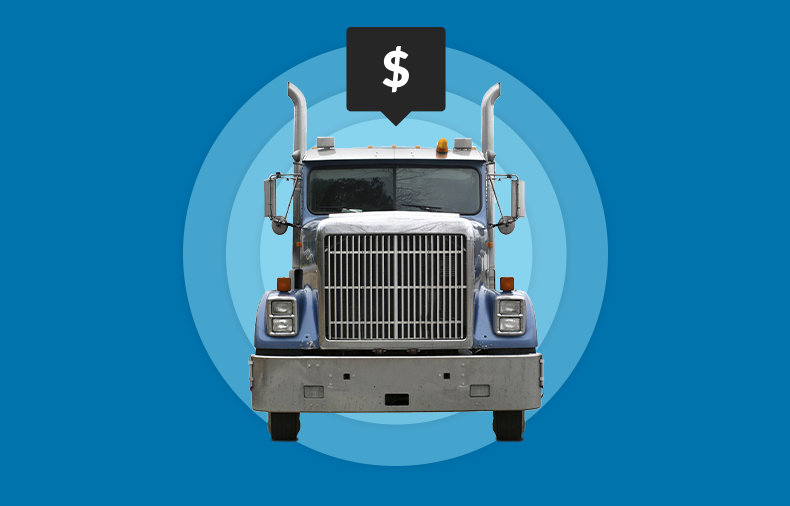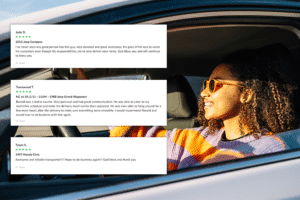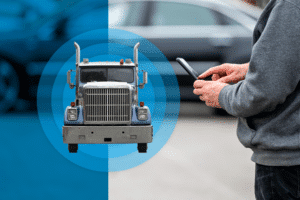Are you planning to ship a car this year? You’re not alone. With more than 2 million registered transportation carriers in the U.S. (according to the FMCSA), narrowing down the best auto transport companies can feel overwhelming.
Whether you’re relocating, buying a car online, or sending a vehicle to a family member, the right transport company should offer reliable service, transparent pricing, and peace of mind. This guide breaks down what to look for in a provider and how to avoid hidden fees, scams, and delays.
Spoiler: you can compare and book with professional carriers all in one place with uShip.
Start With Your Vehicle and Shipping Needs

Before comparing companies or collecting quotes, get clear on your shipping requirements. Factors like vehicle type, distance, condition, and timing all affect the carrier you’ll need.
1. Type of Vehicle
Not all vehicles require the same transport setup. Here’s how yours might impact cost and carrier availability:
- Standard vehicles (sedans, SUVs, light trucks): Common and easy to book
- Motorcycles, ATVs, or specialty vehicles: May need custom crating or enclosed transport
- Non-running cars: Require winches or liftgates
- Oversized or modified vehicles: Can limit which carriers are equipped to load and haul them
- Luxury, classic, or exotic vehicles: Usually need enclosed trailers and additional cargo protection
2. Transport Method: Open vs. Enclosed
Choosing between open and enclosed transport is a big factor in both protection and pricing.
| Transport Type | Cost | Protection Level | Best For |
|---|---|---|---|
| Open Transport | Lower | Basic protection | Standard vehicles, budget-conscious |
| Enclosed Transport | Higher | Full weather/debris cover | Luxury, collector, or high-value cars |
- Open transport is the industry standard—widely available and more affordable.
- Enclosed transport provides added protection and privacy, ideal for collectible or high-value vehicles.
Budgeting and Timing Tips
Car shipping rates can swing depending on:
- Time of year (summer and holidays = higher demand)
- Distance + route popularity
- Vehicle size and condition
- Expedited delivery needs
- Fuel surcharges + regional pricing trends
When to Ship for the Best Rates
- Winter: Lower prices, but possible delays due to weather
- Spring/Fall: Balanced cost and availability
- Summer: Fast service, but higher costs due to peak demand
Being flexible with your pickup and delivery windows can lead to significant savings.
Check Licenses, Credentials, and Insurance
Before booking, verify that the transport company is operating legally and has the insurance needed to protect your vehicle. If you’re booking through uShip, these credentials can easily be found on a transporter’s carrier profile.
Look for These Credentials
- DOT Number: Issued by the Department of Transportation
- MC Number: For interstate transport operations
- FMCSA Registration: Public records on safety and legal standing
Bonus Tip: Use the FMCSA database to validate carrier details and check safety ratings.
Understand Carrier vs. Broker
- Carriers operate the trucks and handle the move
- Brokers connect you with a network of trusted carriers
Both are legitimate. What matters most is that the company is upfront about who’s doing the work—and that you feel confident in their reliability.
The uShip Difference: Unlike brokers, uShip is not involved in the transport itself. We’re a marketplace platform that connects you with thousands of trusted carriers, letting you compare options, read reviews, and book directly. No middlemen, no surprises.
Know What Insurance Covers
Federal law requires a minimum of:
- $750,000 liability insurance
- $5,000–$10,000 cargo insurance per vehicle
But if you’re shipping a high-value vehicle, you may want to look for additional coverage or third-party options, like the uShip Protection Plan.
Also, insurance typically doesn’t cover personal items left inside the car, pre-existing damage, or acts of nature (e.g., hail, flooding). Document your vehicle’s condition with photos before pickup.
Read Reviews and Compare Experiences
Online reviews can tell you a lot more than star ratings alone.
Where to Look
- Google Reviews
- Better Business Bureau (BBB)
- TransportReviews.com
- FMCSA safety records
- Social media + forums (Reddit, car enthusiast groups, etc.)
- uShip Carrier Profiles
Focus on recent reviews that highlight communication, punctuality, and how a company handles issues, not just glowing or angry one-liners.
What to Watch For
- Patterns of late deliveries or missed pickups
- Unanswered complaints
- Vague pricing or unexplained extra fees
- Professionalism of the transport team
Also, look for companies that respond to negative reviews. It’s a strong signal of how they handle customer service when things don’t go perfectly.
Compare Car Shipping Quotes (the Smart Way)
To get accurate quotes, you’ll need to provide:
- Year, make, and model of the vehicle
- Pickup and drop-off locations
- Preferred shipping type (open or enclosed)
- Condition of the vehicle (running or not)
- Desired time window for pickup/delivery
Tip: Don’t just go with the cheapest quote
Quotes that are too low could be a red flag for:
- Hidden fees
- Bait-and-switch pricing
- Delayed service due to unassigned carriers
- Inexperienced transporters
Get at least 3 quotes, and compare them based on included services.
Service Levels to Know
- Door-to-door shipping: Most convenient, but not always possible in residential zones
- Terminal-to-terminal: Cheaper, but requires you to drop off/pick up at a facility
- Expedited delivery: Fast, but costly
- White-glove transport: For luxury vehicles with full handling support
Ask the Right Questions
Before booking, make sure you understand the process, timeline, and what happens if something goes wrong.
Essential Questions to Ask:
- What’s the pickup window and estimated delivery time?
- What tracking options do you offer?
- How will I be notified of delays?
- What happens if my car is damaged during transport?
- Who is my point of contact throughout the shipment?
Reliable companies will answer clearly, provide documentation, and keep you in the loop the entire time.
Don’t Skip the Fine Print
Contracts matter. Before signing, read the terms carefully—especially around fees, cancellations, and insurance.
Key Sections to Review
- Pickup and drop-off details
- Transit windows and flexibility clauses
- Insurance coverage and exclusions
- Accepted payment types and deposit terms
- Cancellation or rescheduling policies
Watch out for no-refund policies, vague contract language, or pressure to pay large deposits upfront.
Final Prep for Pickup Day

Before your vehicle is loaded, take a few steps to avoid delays or disputes:
Pre-Shipping Checklist
- Remove all personal items (they’re not covered)
- Wash the car and take timestamped photos of its condition
- Leave 1/4 tank of gas
- Disable alarms or anti-theft systems
- Secure loose parts or accessories
- Confirm contact info with your carrier
Also, make sure you or someone you trust is available at both pickup and delivery to sign off and inspect the vehicle.
Why Book Through uShip?
You could spend hours chasing down quotes from individual auto transport companies, vetting credentials, and juggling communication. Or you could let uShip do the heavy lifting. With uShip, you can:
- Compare multiple auto transport quotes in one place
- View carrier reviews, insurance details, and service history
- Choose between open or enclosed transport
- Book securely and track your vehicle in real time
- Get customer support if something doesn’t go as planned
Whether you’re shipping across the state or across the country, uShip helps you book confidently, save time, and get your car there safely.
People Also Ask
How do I find a trustworthy auto transport company?
Start by verifying DOT and MC numbers in the FMCSA database. Read recent reviews on platforms like Google, BBB, and TransportReviews. Look for transparent pricing, responsive customer service, and up-to-date insurance info. Or skip the legwork and compare trusted carriers directly on uShip.
What questions should I ask an auto transport company?
Ask about delivery timelines, cancellation policies, insurance limits, what’s included in the quote, and how tracking works. Also confirm whether you’re booking with a broker or carrier.
How much does auto transport cost in 2025?
For cross-country shipping, open transport typically runs $800–$1,500, while enclosed transport ranges from $1,200–$2,500. Rates depend on distance, vehicle type, seasonal demand, and extra services like expedited delivery.
Is enclosed or open transport better?
Open is cost-effective and widely used for standard cars. Enclosed offers full protection for high-value, exotic, or classic vehicles—at a higher price.
How long does auto transport take?
- Local (<500 miles): 1–3 days
- Mid-range (500–1,500 miles): 3–7 days
- Cross-country: 7–14 days
Weather, location, and demand can affect timing.
TL;DR: What to Know About Auto Transport in 2025
Finding the best auto transport company comes down to research, planning, and knowing what questions to ask. Here’s a quick recap:
- Know your vehicle’s needs (size, value, condition)
- Choose between open and enclosed transport
- Compare at least 3 quotes, and don’t chase the lowest price
- Verify licenses and insurance via FMCSA
- Read reviews and ask the right questions upfront
- Prep your car before pickup to avoid delays
- Book through a trusted platform like uShip to save time and reduce risk



